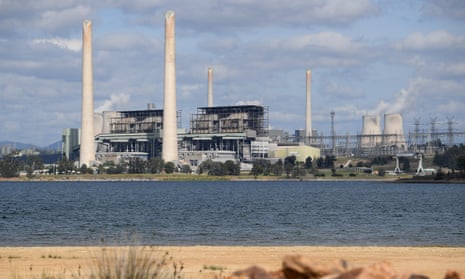Energy Australia has confirmed it will proceed with a new 300MW peaking power plant in the Illawarra in New South Wales capable of using a blend of green hydrogen and natural gas, as officials faced questions about a controversial Snowy Hydro project in the Hunter Valley.
Confirmation that the Energy Australia project will proceed follows a threat from the Morrison government to intervene in the market to ensure there are not shortfalls once the ageing coal-fired power plant at Liddell in the Hunter Valley closes in 2023.
The government gave the private sector until last Friday to bring forward proposals to ensure there is sufficient dispatchable power in the energy market post-Liddell. Energy Australia confirmed its intentions on Tuesday.
The Morrison government has continued to hold out the prospect of Snowy Hydro building a new gas plant at Kurri Kurri to deal with any power generation gap created by Liddell’s exit. The government has identified the gap as 1,000MW.
But a taskforce advising governments about the impact of the Liddell closure did not back Scott Morrison and Angus Taylor’s insistence that 1,000MW of additional dispatchable electricity would be needed to replace the old coal plant. The taskforce listed a range of committed and probable projects that it found would be “more than sufficient” to maintain a high level of power grid reliability as Liddell shut.
At a Senate estimates hearing on Monday, officials from the federal energy department faced questions about the Snowy Hydro proposal at Kurri Kurri.
Officials confirmed the government, through energy minister Angus Taylor and finance minister Simon Birmingham, had asked Snowy Hydro to develop a business plan for the site last year. They said the government was considering whether or not to proceed.
The Kurri Kurri site was previously an aluminium smelter. It was bought by Hunter Valley property developers Jeff McCloy and John Stevens in 2020, with a plan to transform the area into industrial estates, a business park and a new suburb called Loxford Waters.
Officials from the federal Department of Industry, Science, Energy and Resources were asked by the Labor senator Jenny McAllister whether they were “aware that the prospective owner of [the Kurri Kurri] site” – Jeff McCloy of McCloy Group – “was a major Liberal party donor”.
The secretary of the department, David Fredericks, said he was unaware of that, and it was “a matter for Snowy Hydro”. McAllister noted it was also a question of advice to the minister.
“Is the department aware that Mr McCloy was found by NSW Icac to have made illegal donations to Liberal party politicians?” McAllister asked.
“We are not aware of that, senator,” Fredericks replied.
“You’ve got no awareness of Mr McCloy’s involvement in this project?” McAllister asked.
Fredericks said that was a matter “ultimately” for Snowy Hydro. The departmental secretary said he was unaware of whether Taylor, his minister, had met with McCloy.
McAllister was asked whether any steps had been taken to manage any perception of conflicts of interest. Fredericks said it was a matter for Snowy Hydro and Taylor had not sought advice from the department on that point.
While the government’s intentions in the Hunter remain unconfirmed, Taylor said last week the government could proceed with the Snowy proposal which had already secured “critical NSW state significant infrastructure status for their proposed Kurri Kurri gas generator”.
But last week, the chair of Australia’s Energy Security Board, Kerry Schott, argued that a taxpayer-funded gas-fired power plant in the Hunter Valley made very little commercial sense given the abundance of cheaper alternatives flooding the market.
Schott told Guardian Australia putting more gas into the energy market to support renewables was questionable when gas was “expensive power”.
“One of the reasons given for [a taxpayer-funded plant in the Hunter] is it will flood the market with gas-fired power and when there’s a tonne of supply in the market, prices go down,” Schott said.
“We all learned this in economics. However, that doesn’t work when there are a whole lot of other things around that are cheaper in price, like wind, solar and big batteries, like pumped hydro and we’ve got Snowy 2.0 coming.”
A new analysis from energy and carbon market analysts RepuTex also forecasts that gas capacity will fall to the back of the pack as a firming option for renewables, noting that gas generation is “under threat from falling capital and charging costs for energy storage, rising gas prices, and the increasingly flexible operation of coal-fired generators”.
The forecast suggests gas output will fall from 7.5% of all generation in the national electricity market in 2020 to just 1% by 2030 and will be “replaced almost entirely by dispatchable storage solutions”.
The new gas peaker from Energy Australia will be supported by the NSW government to the tune of $78m and by the Morrison government with $5m to support a transition to hydrogen.
In a statement, Taylor welcomed the Illawarra proposal and said: “With the impending closure of Liddell, the government called on the private sector to step up and outline firm investment plans to provide up to 1,000 megawatts of dispatchable electricity generation to avoid unnecessary price hikes and reliability risks.
“EnergyAustralia’s commitment is pleasing and will be the first dispatchable energy generation project to be built in NSW in over a decade.”
